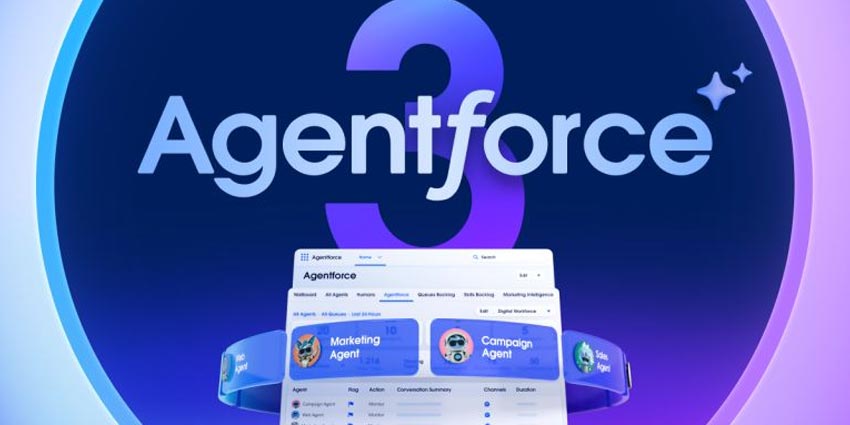Another quarter has come and gone. Yet, the Twilio team did not sit still, watching the world go by. Instead, they have released four exciting innovations. These include:
- Twilio Frontline
- Twilio Video Noise Cancellation
- New Packages for Twilio Lookup
- Message Scheduling, Link Shortening, and Click Tracking
Read on to find out more about each, including the perspectives of Twilio’s product leaders – shared during a recent webinar.
Twilio Frontline Is Now Available to All
Twilio Frontline is now generally available. The solution is a programmable app for sales engagement, offering businesses a way to message customers in their CRM or customer database.
Moreover, the app may support many use cases and personnel across the business. Retail associates may use Twilio Frontline to interact with repeat clients, leasing agents may manage lists of prospective residents, and pharmaceutical sales reps can message doctors in a secure, compliant environment. This is just the tip of the iceberg.
Each user may also harness click-to-call capabilities from the Frontline mobile app and a UI to send text messages to customers via Android and IOS devices.
Sharing more, Jordan Schuetz, Senior Product Marketing Manager at Twilio, added:
Twilio Frontline feels like your typical consumer messaging app experience. It’s kind of like iMessage, and we want you to focus on building strong relationships with your customers, rather than building out your own UI or complex integrations.
The solution integrates with most CRM or customer database solutions. As such, Frontline automatically pulls customers into the app, and the entire conversation history fits inside the CRM. All this data is then stored in the cloud for employees across the business to access.
Alongside these capabilities, Twilio has more Frontline features in beta testing. These include a web interface for frontline users and a manager-level view that gives managers greater visibility to support employees.
The latter allows managers to view employee statuses, access customer conversations, and transfer interactions to team members.
Twilio Launches Noise Cancellation Technology
Twilio Video is a programmable solution that gives businesses the building blocks to create and embed customized videos into customer experiences.
Such building blocks include automated bandwidth detection, engagement insights, virtual backgrounds, and more. Now, it has added another: noise cancellation.
Krisp, a leading vendor in the noise suppression space, powers Twilio Video Noise Cancellation: a plug-in that adds an AI-infused layer to video conversations.
In doing so, the solution filters sound as it travels between employees and customers, blocking background noise on both ends.
The result is that both parties enjoy crystal clear audio, even if only one is using the plug-in.
Many other vendors offer similar solutions. Yet, by connecting with Krisp’s mature AI models, Twilio believes its solution is ahead of the game.
As Anthony Lazaro, Principal Product Manager at Twilio, says:
The technology runs on a sophisticated, deep neural network trained by tens of thousands of hours of human voice dialogue, so the model does an amazing job of differentiating between background noises and the human voice that you want to hear.
Such solutions aim to support video creation in remote workplaces, where distractions are aplenty and often disrupt employee concentration.
It also supports the viewing experience, as audio quality impacts the credibility of what we watch. After all, as Lazaro concludes: “When people have a hard time understanding information, they dismiss it.” Twilio Video Noise Cancellation will help businesses avoid this trap.
New Features for Twilio Lookup Enter Beta Testing
Launched in 2015, Twilio Lookup is an API that allows developers to format phone numbers to be compatible with messaging and voice.
Users can also use the API to check phone numbers and verify the channels that their patients prefer to communicate through.
Yet, now Twilio is pushing the boat out further, investigating how phone intelligence and mobile identity can improve customer engagement.
To do that, the vendor has added more authoritative data sources to Lookup, connecting with global network operators to build a “super network” of identity data that companies can access through the API.
On top of this, Twilio has created three new Lookup packages – currently in beta – to help developers build more secure customer onboarding experiences while sniffing out fraud. These are:
- Lookup Line Type Intelligence – The solution identifies the “line type” of a phone number, with the enhanced ability to identify VOIP phone numbers. Easily provisioned over the internet, scammers often use these to create fake accounts. Also, with this tool, users may pinpoint landlines that can’t receive SMS and digital messages.
- Lookup SIM Swap – The tool provides real-time, authoritative data – directly sourced from mobile network operators – to tell businesses if the SIM link of a mobile telephone number has recently changed, preventing SIM-swap attacks. For this, Twilio is leveraging its network of global carrier connections to deliver support worldwide.
- Lookup Call Forwarding – Complementing SIM Swap, this solution notifies users when the voice channel of a phone number appears compromised.
Discussing each of these three packages, Stephen Wai, Product Manager of Twilio Lookup, stated:
Businesses must combat fake accounts and fraud, and they are looking for fraud signals to identify scammers on their platform. They use these signals in rules engines and machine learning models to predict fraudulent activity, turning to Twilio Lookup to gather insights about phone numbers and mobile devices.
In doing so, companies may grow their user base responsibly, remove fake accounts, and stop account takeovers through SIM-swap attacks.
Message Scheduling for Marketing and Engagement
Message Scheduling is now generally available on Twilio Messaging, allowing developers to trigger messages to customers at specific times with an out-of-the-box tool.
Additionally, Twilio has released link shortening and click tracking in a public beta.
Link shortening allows businesses to condense links in SMS, MMS, and WhatsApp, with a branded, registered domain for increased deliverability. These links also look more appealing and increase customer trust in the links.
Such innovations will support proactive outreach strategies, which often fail, with Gartner research revealing that customers often contact support teams to double-check messages are genuine.
Meanwhile, click tracking monitors engagement through messaging, calculating click-through rates (CTR) and various other metrics via a webhook. It also monitors these on an individual customer level, with a unique 10-digit slug for each recipient.
By combining these capabilities, businesses may adopt many proactive messaging use cases, including promotion, onboarding, re-engagement, and reminder alerts.
Also, as Sally Lee, Product Manager of Messaging at Twilio, said:
When you blend message scheduling, link shortening, and click tracking together, businesses may evaluate the success of their programs and optimize campaigns to maximize ROI.
Finally, Lee promised new message tagging, bulk sending, and out-of-the-box reporting features are in the pipeline.
What Else Is Going on at Twilio?
During its latest release wave, Twilio also plugged its Customer Engagement Platform, which drives real-time, personalized engagement at an enterprise scale.
Its platform combines its CPaaS capabilities with Twilio Segment – its customer data platform – to power customer experiences.
While Omdia recently recognized the platform as a market leader, its CPaaS technology is also making much headway in its own right.
Indeed, reports suggest that Twilio leads the CPaaS space, controlling over half of the market, which estimates suggest will be worth $60 billion by 2032.
Elsewhere, the vendor also celebrated its largest-ever Flex deal.
So, while layoffs and a phishing attack have created some unwanted headlines, the company has many irons in the fire that may inspire further growth.







